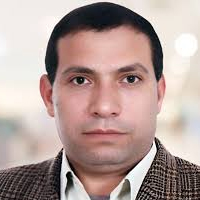Crime Scene Examination of Murder Case
Published on: 23rd December, 2024
This case study is based on a crime scene examination murder of a young person. This case was reported in the police station located in the north-northeast district of Delhi, India. An unknown dead body was found lying on the roadside with a head injury, suspected to be a road accident. A team of forensic experts was called for a crime scene examination. After examination, it was observed that the body had multiple injuries. There was a blood pattern seen behind the hand and the head of the dead body. This was a suspicion of a murder case, instead road accident. After body identification by the family members and the last location of the victim, the place of murder i.e. house has been identified and examined by the expert team and found a lot of incriminating evidence from the scene of the crime. A two-wheeler was recovered suspected to be used to dump the dead body on the roadside. After examination of the vehicle, clue material found it was found. After a complete examination of the spot and vehicle, sufficient forensic evidence was collected and preserved to establish the crime was murder, not a road accident. This case study involved the application of scientific tools, interpretation of the sequence of evidence at the scene, systematic study of case-related information, and the logical formulation of a theory to give the proper information to the investigating agency. It has been concluded that the boy was murdered in the room and dumped roadside by using the bike.
Bidirectional Aspects of Well-being of Patients and Main Caregivers after Neurosurgery
Published on: 7th May, 2025
Objectives: Hospitalization following a head injury is associated with high rates of disability that have a strong correlation with depression, anxiety, and low self-esteem. Well-being is related to life satisfaction, quality of life, happiness, personal growth and flourishing, competence, self-acceptance, positive relationships, and autonomy. The well-being of patients and their primary caregivers is important when a patient is left with impaired mobility after neurosurgery. The aim of this study is to examine whether the well-being of patients and their primary caregivers will differ before and after neurosurgery, and whether well-being differs between patients with motor disability (WMD group) and those without, compared to those who are not - NMD group (non-motor disability).Methodology: 123 patients and their main caregivers were recruited. Of these, 62 were in the before neurosurgical group, 31 Patients and 31 caregivers. 61 in the after neurosurgical group, 30 Patients and 31 caregivers, of which there are 16 from WMD group and 15 from NMD. Main outcome measures: Two analyses of Variance (ANOVA) were conducted: for WMD and NMD separately. The results reveal a significant decrease in wellbeing for both, patient and main caregivers, but a stronger decline in well-being was observed among WMD, as indicated by a larger effect size (η² = 0.74) compared to the NMD (η² = 0.38). In addition, no significant effect between group and time of measurement was found, indicating that the decrease in wellbeing was not different among patients compared to their main caregivers. Conclusion: The findings highlight the multifaceted impact of neurosurgery on well-being, particularly for patients who remain with motor disabilities and their primary caregivers.The decline in well-being after neurosurgery highlights the need for improved social support and the importance of developing treatment programs that can help ease the process of coping with these phenomena and provide appropriate support for both patients and their primary caregivers.




